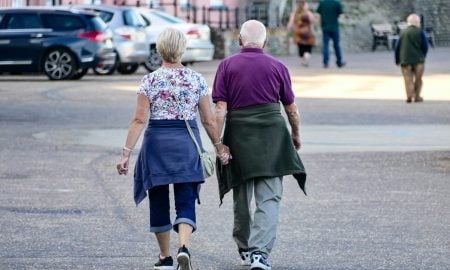
Crowdfunding Might Not Help in a Crisis. Here’s Why

Inadequate in a crisis situation
Even though it is a highly popular fundraising method, crowdfunding cannot develop into a social safety net. Giving money to individuals for projects via a variety of online channels is what crowdfunding entails. People turned to crowdfunding websites in historic numbers during the epidemic, branding it as a safety net for Americans, and some initiatives had a revolutionary impact. A GoFundMe campaign started by Brandon Stanton of the well-known Humans of New York project helped Kasson, a young child who was blinded in an attack, raise over $675,000 from 23,000 donors since late 2021, while Jim, a single father with a disabled son, was unable to raise any money because of insufficient exposure.

Source: Pexels
Jim had a medical emergency and needed $2,000 to keep his family in their house and prevent eviction. Uncomfortably, most campaigns fail to reach their goals, much like Jim, because GoFundMe and like websites can’t help most customers who have money troubles. Due to the ingrained impacts of social network differences, wealth inequality, and social media dynamics, technical remedies cannot alter these dynamics. Campaigns seldom raise $1,000 on average, and nine out of ten campaigns fall short of their funding targets. 33 percent of medical campaigns in 2020 received no funding.
Large Audiences Needed

Source: Pexels
Crowdfunding is most effective for users who have a large following on social media. Although Kasson’s narrative was compelling on its own terms, the campaign benefited from Stanton’s strong social media presence. A charitable crowdfunding campaign must get a donor’s attention on a social media site like Facebook, Twitter, or Instagram before it can collect a gift. Due to our inability to prioritize among the vast amount of data available, platforms make our decisions for us using algorithms that take into account only a small subset of online content, such as popularity, the date the content was created, our location and social proximity, advertising contents, or shared interests. We are overwhelmed by the sheer volume of media information accessible in our economy of constrained attention. Few crowdfunding efforts, and just a limited, carefully selected portion of their content, reach large audiences, and those audiences only see successful initiatives. For those with high-income social networks, crowdfunding is effective. Homophily is the word used by social scientists to describe how people keep social links with others who are similar to them in terms of education, economy, and culture.
Unmet Needs of People in Need
Campaigns in the United States began in counties where the top 20% of earners received median incomes that were more than twice as high as those of the poorest 20%. Social networks can accentuate revenue disparities in crowdfunding campaigns, which are caused by lesser incomes and resources rather than by different levels of benevolence. According to research, Americans with the lowest incomes are particularly charitable, as 40% of campaign donors had household incomes under $60,000 and over a third were unemployed at the time of their donations. However, without extra income to draw from, donations are smaller and distributed among many people in need. GoFundMe acknowledges that their website is clogged with unmet fundamental necessities but does not provide any options.

Source: Pexels
CEO Tim Cadogan pleaded with Congress for further pandemic help in February 2021, claiming it was the responsibility of the US government to do so. Even Nevertheless, COVID support programmes were cut even though Americans were still having financial difficulties. Since there are few successes and disparities are reinforced rather than reduced, individuals will continue to seek online assistance until legislators enhance crucial support programmes like the Child Tax Credit.
More in Crowd Funding
-
`
5 Reasons Why You Should Choose Online Banking Over a Brick-and-Mortar One
Online banking changes the way you handle money from day one. It takes the usual stress out of managing accounts and...
July 25, 2025 -
`
How Changing Interest Rates Shape Stock Market Performance
Interest rates are the stock market’s quiet puppeteer. You won’t see them flashing on a trading screen. But they steer everything,...
July 17, 2025 -
`
Granny Pods: A Smart Housing Solution for Aging Loved Ones
Finding the right living arrangement for aging family members can be a challenging task. Traditional options, such as nursing homes or...
June 10, 2025 -
`
Useful Real Estate Strategies at Various Stages of an Investing Career
There is no one perfect investing approach, as real estate investors are aware. At various phases of your investing career, investigate...
May 2, 2025 -
`
Downsizing after Retirement is a Pain, but Here’s How You Can Go About It
Retirement needs extensive planning, and it is not just finances. Without proper plans for this next phase of life, chances are...
April 6, 2025 -
`
Break IKEA Rules and Try These Usual and Creative Furniture Hacks
Let’s be honest; we all love furniture items from IKEA be it the incredible day out traversing IKEA walkways, to ridiculously...
January 2, 2025 -
`
From Farm to Table: Who are the Stars Who Grow Their Own Food – Part I
This one is for those with Green thumbs, who just need an extra push to grow their food! While some celebrities...
January 1, 2025 -
`
Longevity Expert Identifies Top Breakfast Choice and Five Additional Healthy Options
Breakfast is often hailed as the most crucial meal of the day, and for good reason. After a night of rest,...
September 3, 2024 -
`
Walmart Heirs Approaching $100 Billion Each, Surpassing Elon Musk’s Fortune
Three heirs to the Walmart fortune are nearing individual net worths of $100 billion, and together, they surpass the wealth of...
September 3, 2024















You must be logged in to post a comment Login